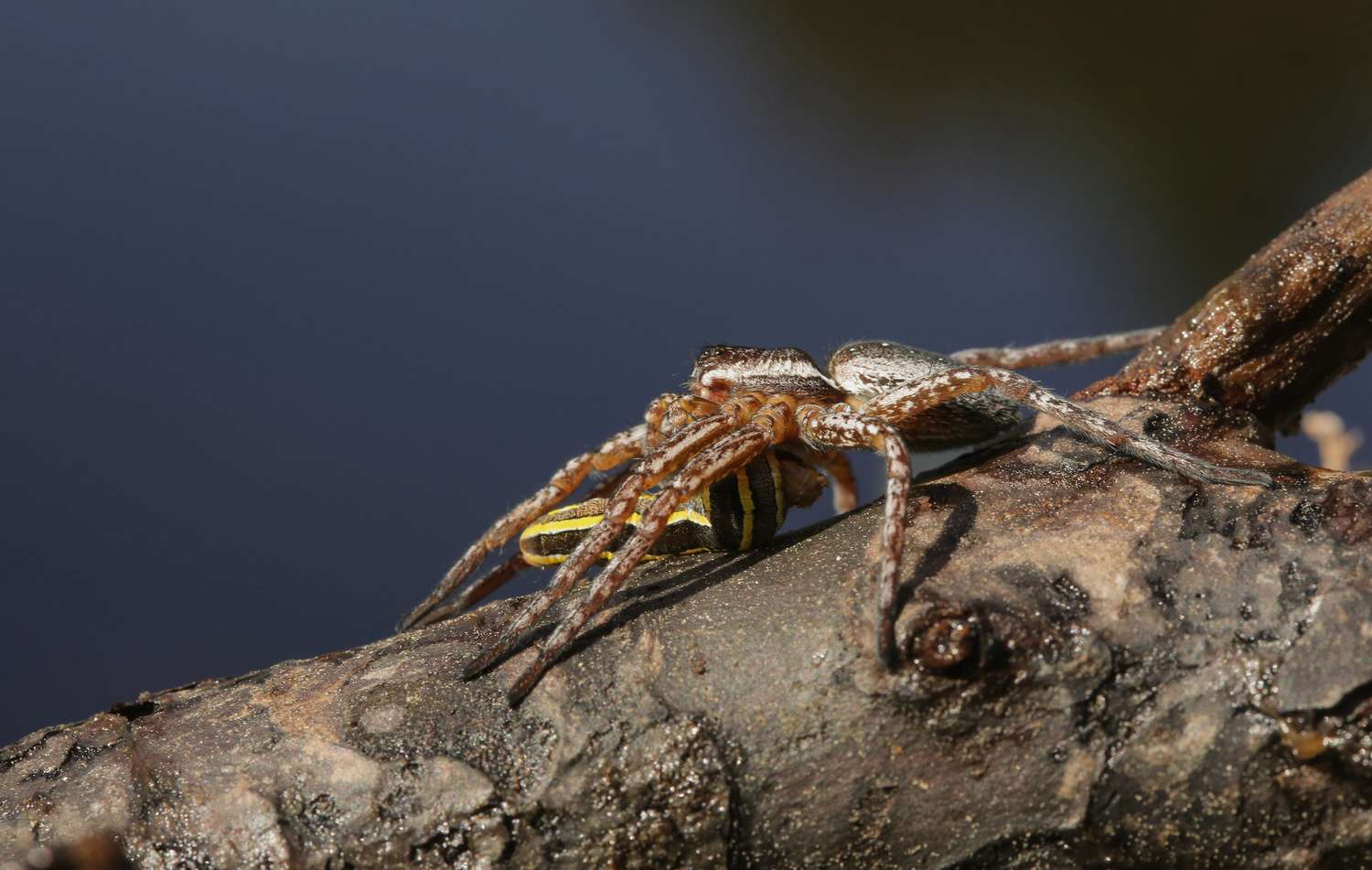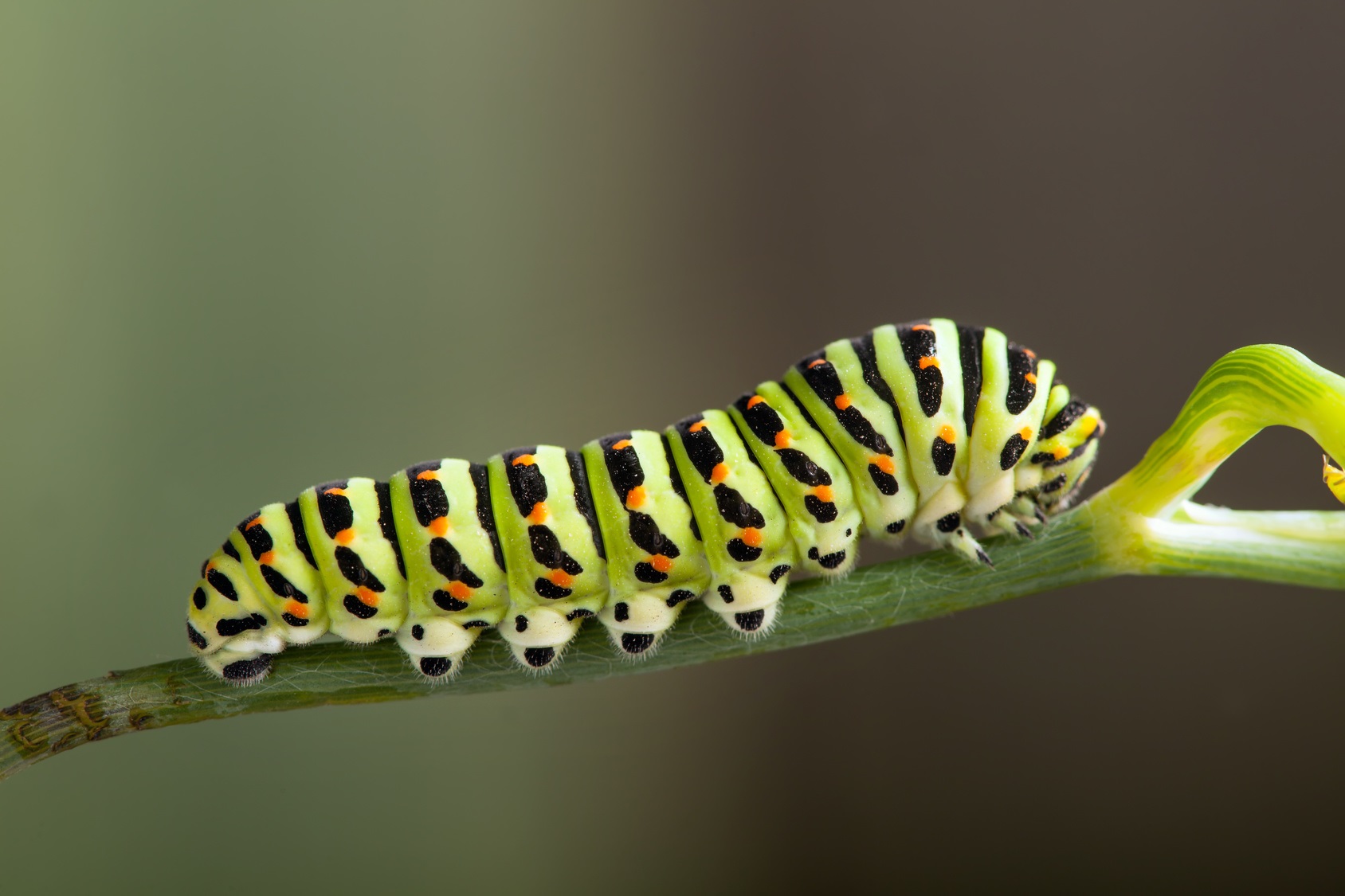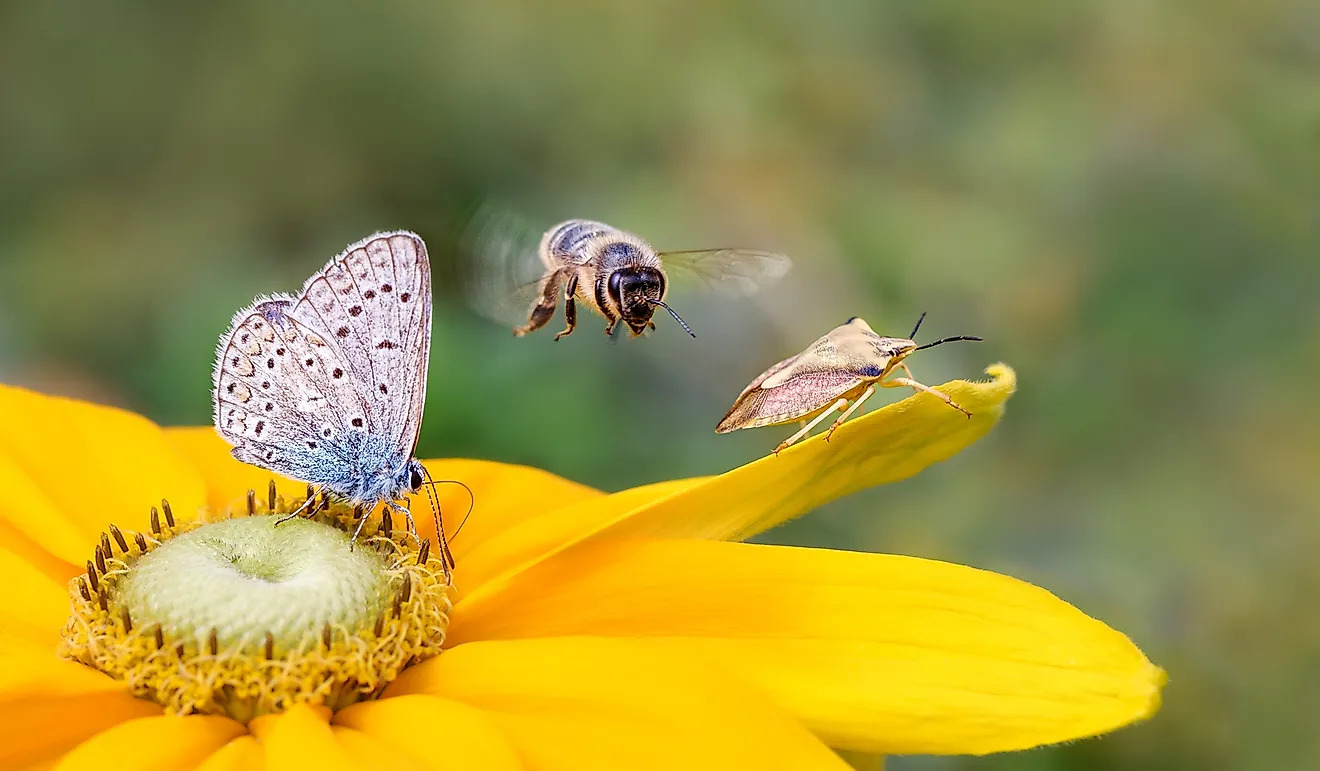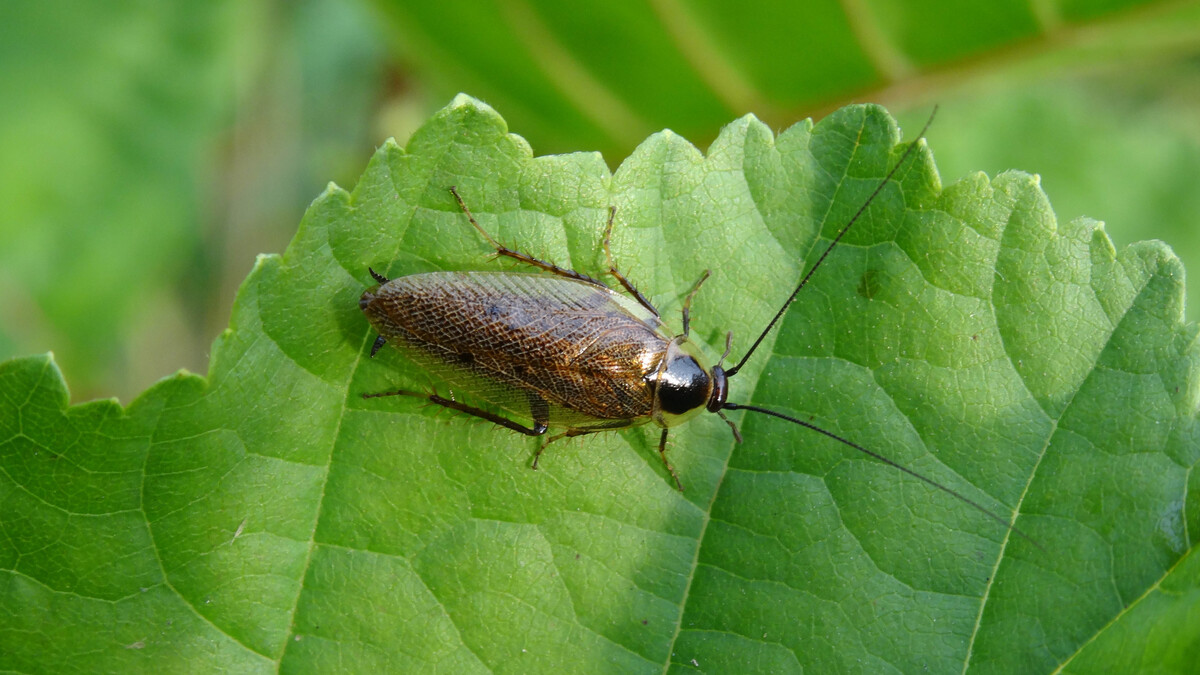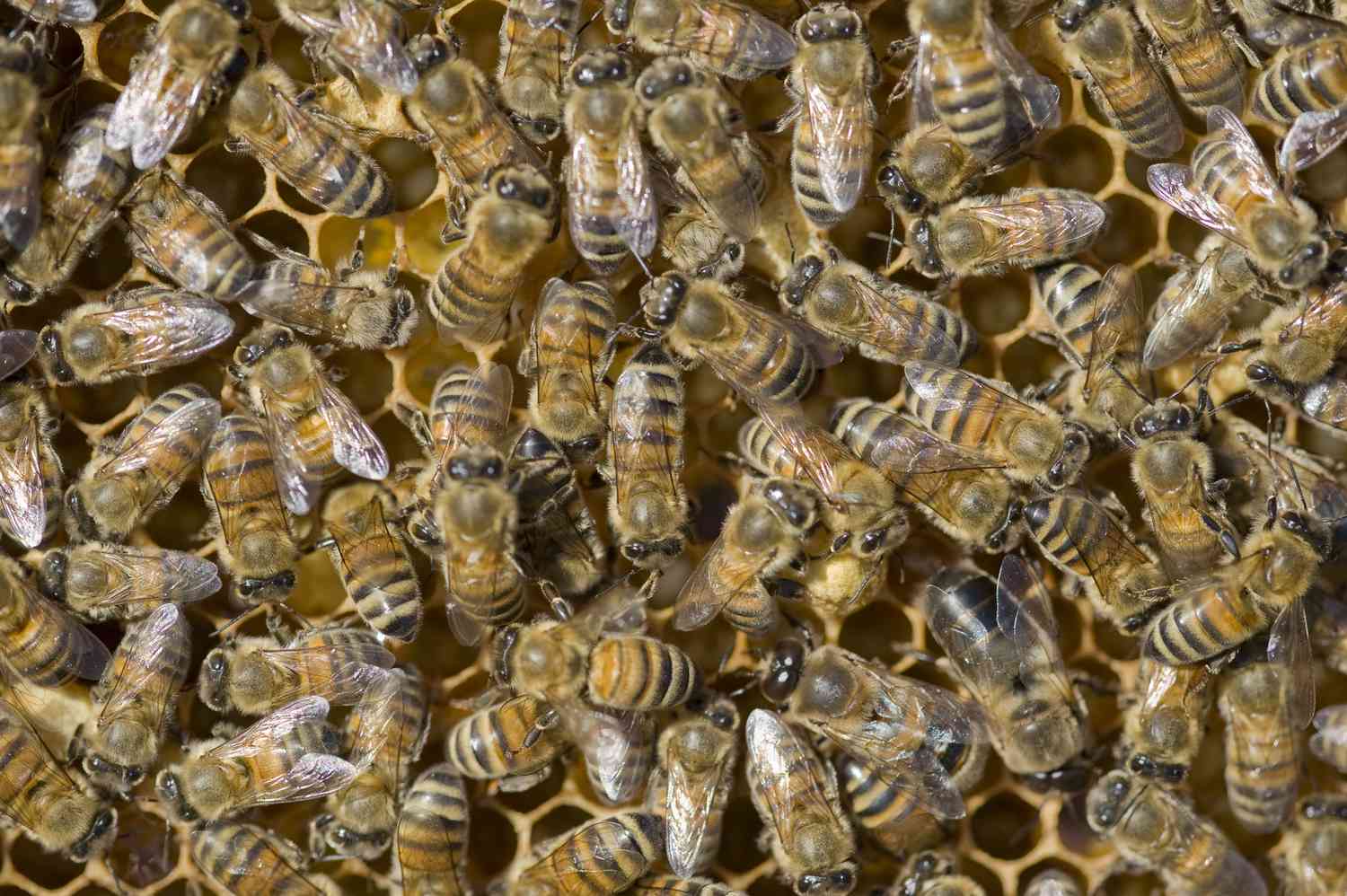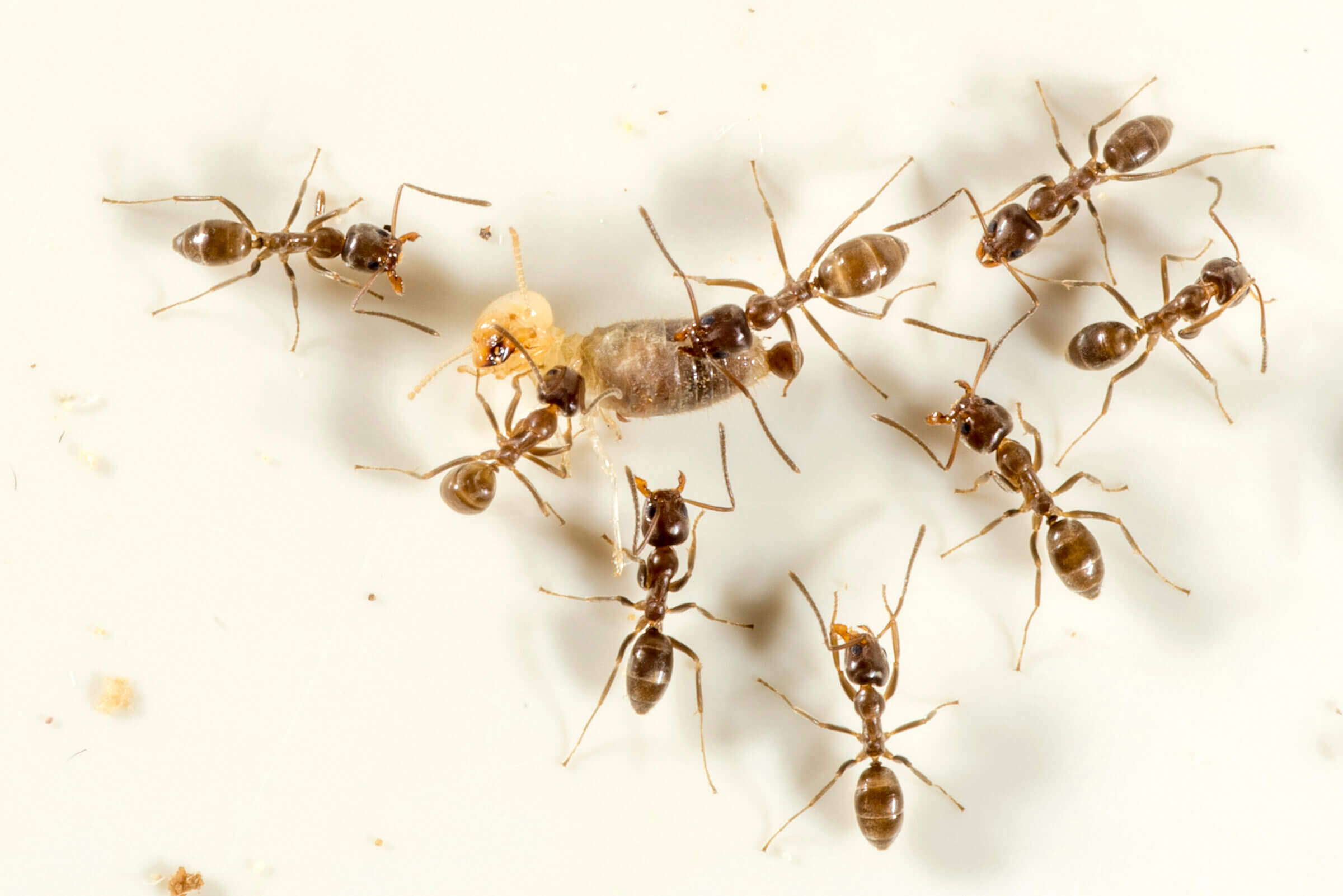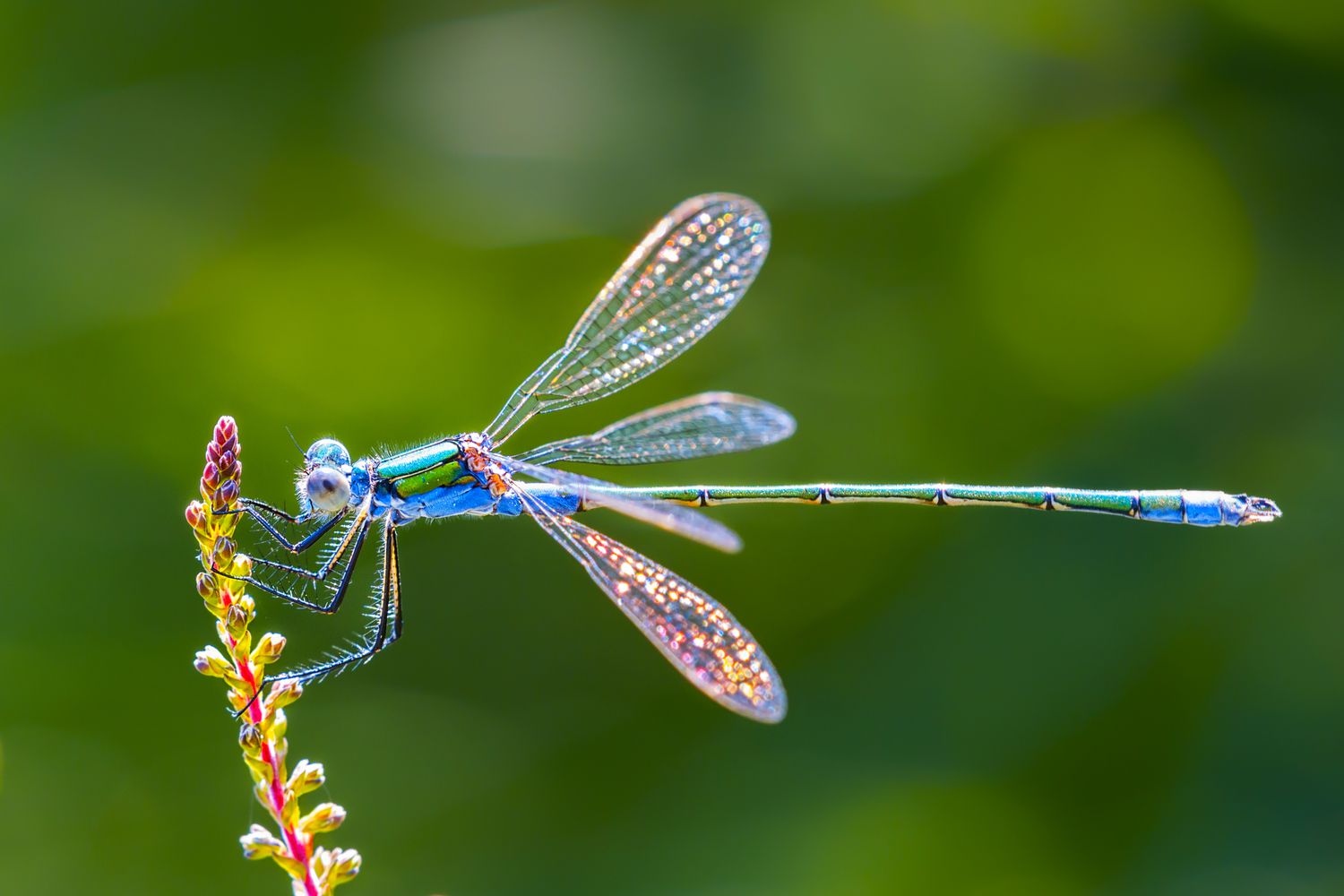Home>Gardening News and Trends>Latest News>What Is Diapause In Insects
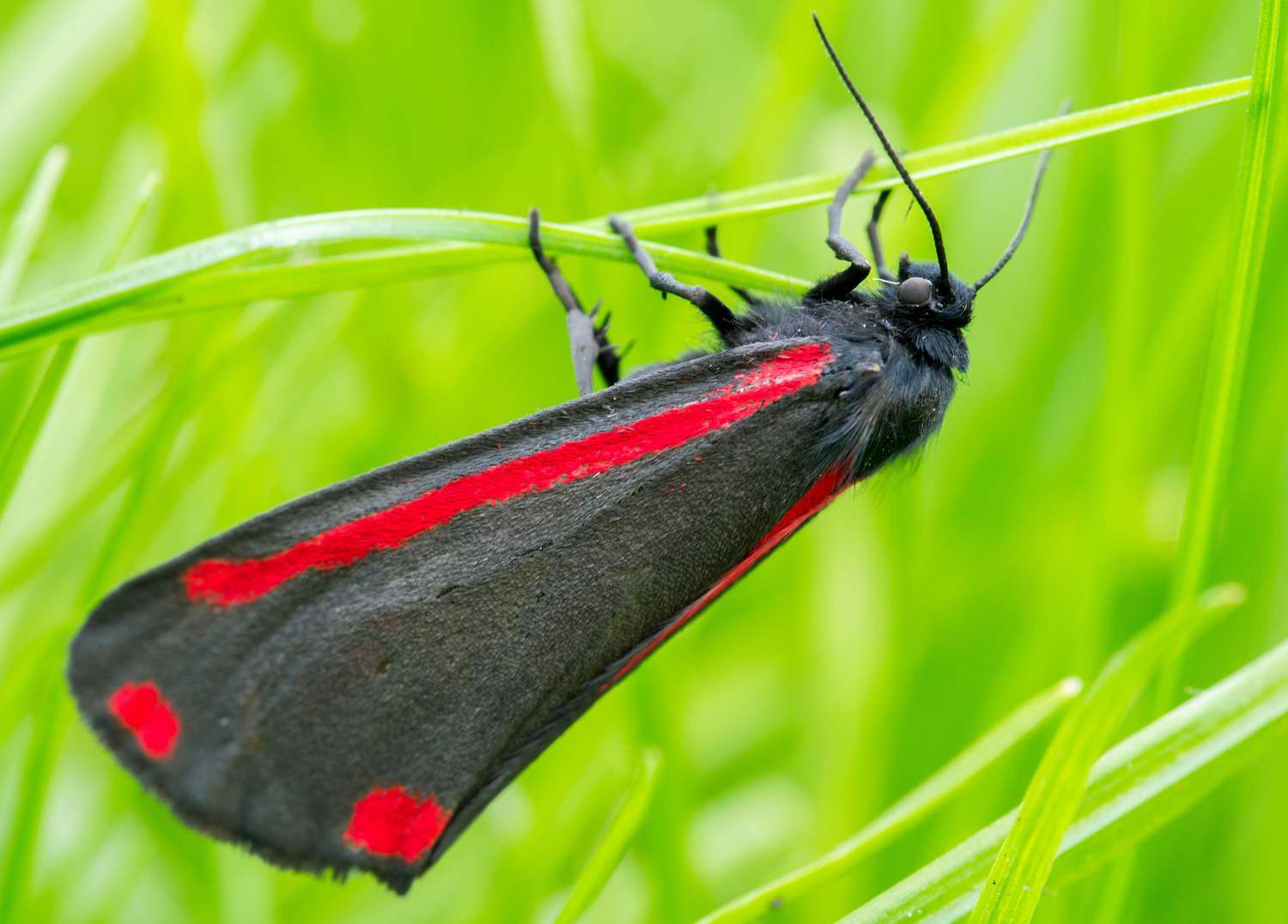

Latest News
What Is Diapause In Insects
Published: December 5, 2023
Discover the latest news on Diapause in insects and its impacts. Learn about the unique biological phenomenon that allows insects to survive harsh environmental conditions.
(Many of the links in this article redirect to a specific reviewed product. Your purchase of these products through affiliate links helps to generate commission for Chicagolandgardening.com, at no extra cost. Learn more)
Table of Contents
- Introduction
- Definition of Diapause
- Types of Diapause
- Triggering of Diapause
- Physiological Changes during Diapause
- Environmental Factors Affecting Diapause
- Adaptations for Survival during Diapause
- Diapause Termination and Resumption of Development
- Ecological Significance of Diapause
- Diapause in Agricultural Pests
- Conclusion
Introduction
Diapause is a fascinating phenomenon observed in the insect world, where certain insect species enter a period of suspended development and metabolic activity. This adaptive mechanism allows insects to survive adverse environmental conditions, such as extreme temperatures, lack of food, or unfavorable seasonal changes. During diapause, insects undergo various physiological and behavioral changes that enable them to conserve energy and increase their probability of survival.
Understanding diapause is crucial for comprehending the life cycle and ecology of insects. It plays a significant role in shaping population dynamics, distribution patterns, and biodiversity. Moreover, diapause has practical implications in the field of agriculture as it influences the behavior and control of agricultural pests.
In this article, we will explore the concept of diapause in insects, its different types, the factors that trigger and regulate it, as well as the physiological changes and adaptive strategies exhibited by insects during this period of dormancy. We will also delve into the ecological significance of diapause and its implications for the management of agricultural pests.
Definition of Diapause
Diapause is a state of arrested development and reduced metabolism that certain insects enter in response to adverse environmental conditions. It is a temporary period of dormancy that allows insects to survive unfavorable seasons, such as winter or dry periods, by conserving energy and resources. Diapause is distinct from other forms of dormancy, such as hibernation or aestivation, as it involves specific physiological and behavioral adaptations.
During diapause, insects exhibit a suspended state of growth and development. Metabolic activity, including feeding and reproduction, is significantly reduced or completely halted. This enables insects to conserve energy and withstand environmental stresses that would otherwise be detrimental to their survival. Diapause is considered an adaptive strategy that enables insects to synchronize their life cycles with the availability of resources and favorable conditions.
Diapause is a highly regulated process that can be triggered by various factors, including the photoperiod (duration of daylight), temperature, humidity, nutritional status, and hormonal changes. The onset and duration of diapause are species-specific and may vary based on geographic location and environmental cues.
It is important to note that diapause should not be confused with quiescence or inactivity. While both diapause and quiescence involve a state of reduced activity, diapause is a genetically programmed response specifically aimed at surviving adverse conditions, whereas quiescence is a temporary period of inactivity due to external factors.
Types of Diapause
Diapause can be classified into different types based on the stage of development at which it occurs and the specific adaptations exhibited by insects during this period. The three main types of diapause are:
- Embryonic Diapause: In this type of diapause, the embryo enters a dormant state before hatching. The embryo remains in a state of suspended development within the egg until environmental conditions become favorable for its survival. This type of diapause is commonly observed in insects that lay their eggs in the fall or winter, allowing the eggs to “overwinter” and hatch when conditions are more suitable for the survival of the larvae.
- Larval Diapause: Larval diapause occurs when the larvae enter a state of suspension in their development. The larvae may cease feeding and remain in a dormant state, often protected within a shelter or burrow. This type of diapause is commonly observed in insects that experience seasonal changes in their environment. Larval diapause allows the insects to survive unfavorable conditions, such as extreme temperatures or scarcity of food.
- Adult Diapause: Adult diapause involves the suspension of reproductive development and activity in adult insects. During this period, adults may cease mating, oviposition (laying eggs), and other reproductive behaviors. Adult diapause is most commonly observed in insects that rely on seasonal cues to time their life cycle. It allows them to avoid unfavorable conditions for reproduction and increase their chances of survival.
It is important to note that some insects may exhibit multiple types of diapause throughout their life cycle, depending on environmental conditions and species-specific adaptations. The specific type of diapause exhibited by an insect is determined by its genetic programming and response to environmental cues.
Triggering of Diapause
The initiation of diapause in insects is triggered by a combination of environmental cues and internal physiological changes. These triggers vary depending on the species and the specific type of diapause. Here are some key factors that can influence the onset of diapause:
- Photoperiod: The duration of daylight plays a crucial role in the induction of diapause. Many insect species have a critical day length, beyond which diapause is initiated. Shorter day lengths in the fall signal the approach of winter, prompting insects to enter diapause to survive the harsh conditions.
- Temperature: Temperature is another essential factor in diapause triggering. In colder climates, a decrease in temperature acts as a signal for the onset of diapause. Conversely, in warmer regions, higher temperatures may trigger diapause in response to hot and dry periods. The sensitivity to temperature variations can vary between different insect species.
- Food Availability: Insects rely on feeding to meet their nutritional needs and energy requirements. A scarcity of food resources can signal the initiation of diapause as a survival strategy. For example, if the availability of suitable host plants decreases, certain insect species may enter diapause until the plants become abundant again.
- Hormonal Changes: Internal hormonal changes play a vital role in diapause initiation. The balance of certain hormones, such as juvenile hormone and ecdysteroids, can shift, leading to the development of physiological changes associated with diapause. These hormonal changes are influenced by external environmental cues and trigger the entry into diapause.
It is important to note that the triggers for diapause can be dynamic and vary based on geographic location, species-specific adaptations, and local environmental conditions. Additionally, different combinations of triggers may be needed to induce diapause in certain insect species. The precise mechanisms involved in the sensing and integration of these triggers are still being studied and are a topic of ongoing research in the field of insect physiology.
Physiological Changes during Diapause
Diapause brings about significant physiological changes in insects that contribute to their survival and preservation of energy during periods of unfavorable conditions. These changes are essential for the insects’ ability to withstand environmental stresses. Here are some of the key physiological adaptations observed during diapause:
- Metabolic Suppression: In diapause, insect metabolism is greatly reduced. The metabolic rate decreases, resulting in a slowdown of various processes within the insect’s body. This reduction in metabolic activity helps conserve energy and resources, allowing the insect to survive for extended periods without feeding.
- Reproductive Quiescence: During diapause, insects typically cease reproductive activities. This includes the suspension of mating, oviposition, and development of reproductive organs. By halting reproductive processes, insects can redirect their energy towards vital survival processes and avoid investing resources in offspring that may have a lower chance of survival.
- Enhanced Stress Tolerance: Insects in diapause exhibit enhanced resistance to various environmental stresses. They are better able to withstand extreme temperatures, dehydration, and starvation compared to their non-diapausing counterparts. Diapause-induced changes in the composition of cuticles and other protective structures enable the insects to withstand desiccation and physical damage.
- Metamorphic Arrest: In insects that undergo metamorphosis, such as butterflies or beetles, diapause often results in the arrest of larval or pupal development. The insect remains in a state of suspended development until favorable conditions return. This adaptive strategy allows them to avoid emerging as adults in an unfavorable or resource-scarce environment.
- Longevity: Diapause can significantly increase the lifespan of insects. By conserving energy and reducing metabolic processes, insects in diapause can extend their lifespan and survive for extended periods without food or favorable conditions. Once the diapause period ends and conditions become suitable, the insects can resume development and continue their life cycle.
These physiological changes are regulated by complex interactions between hormonal signaling, genetic programming, and environmental cues. The specific adaptations exhibited by insects during diapause vary between species, allowing them to survive in diverse and challenging environments.
Environmental Factors Affecting Diapause
Diapause in insects is regulated by various environmental factors that provide cues for the insects to enter or exit this dormant stage. These factors play a crucial role in determining the timing and duration of diapause. Here are some of the key environmental factors that influence diapause in insects:
- Photoperiod: The duration of daylight (photoperiod) is one of the primary environmental cues that trigger diapause. It serves as a reliable indicator of seasonal changes and helps insects synchronize their life cycle with favorable periods for survival. Changes in the length of daylight signal impending adverse conditions, such as winter, prompting insects to enter diapause.
- Temperature: Temperature fluctuations play a vital role in diapause regulation. Many insect species have a specific temperature range that triggers the onset or termination of diapause. Cooler temperatures often initiate diapause, allowing insects to survive harsh winter conditions. On the other hand, warmer temperatures can signal the end of diapause, inducing the resumption of development and other reproductive activities.
- Humidity: Humidity levels can also influence diapause in certain insect species. High humidity may signal the onset of diapause as a response to conditions that are not conducive to growth and development. Conversely, a decrease in humidity, such as during dry seasons, may trigger the termination of diapause, allowing insects to resume their life cycle.
- Food Availability: The availability of food resources is a critical factor affecting diapause. Scarcity of food or the absence of suitable host plants can signal the initiation of diapause, enabling insects to conserve energy and survive until resources become abundant again. Conversely, an increase in food availability can trigger the termination of diapause, prompting the resumption of growth and reproduction.
- Other Environmental Cues: In addition to photoperiod, temperature, humidity, and food availability, other environmental cues such as rainfall patterns, wind, and chemical signals from neighboring organisms can also play a role in diapause regulation. These cues provide additional information about the environmental conditions and help insects make informed decisions about entering or exiting diapause.
It is important to note that the specific environmental factors affecting diapause can vary between insect species. Different combinations of cues and thresholds may be required to elicit diapause responses in different geographic locations or ecological niches. Understanding these environmental factors is crucial for predicting and managing insect populations and their impact on ecosystems and human activities.
Adaptations for Survival during Diapause
During diapause, insects employ various adaptations to ensure their survival and enhance their chances of successfully resuming development when conditions become favorable. These adaptations enable insects to endure harsh environmental conditions and conserve energy. Here are some key adaptations exhibited by insects during diapause:
- Hibernacula Formation: Many insects construct protective structures, such as cocoons, nests, or burrows, to shield themselves during diapause. These structures provide insulation, protection from predators, and regulate temperature and humidity, creating a microenvironment conducive to survival. The hibernacula also serve as a physical barrier to the external environment, reducing desiccation and providing a safe haven for the insect.
- Antifreeze Proteins: Insects that experience diapause in cold conditions often produce antifreeze proteins. These proteins lower the freezing point of bodily fluids, preventing ice crystal formation and cellular damage. Antifreeze proteins act as a protective mechanism, allowing insects to survive freezing temperatures and resume development when conditions become favorable. They are particularly important for insects that undergo diapause in regions with cold winters.
- Metabolic Suppression: One of the key adaptations during diapause is the suppression of metabolic activity. This enables insects to conserve energy and minimize the consumption of stored resources. The reduced metabolic rate during diapause allows insects to survive for extended periods without feeding, relying on energy reserves accumulated prior to entering diapause. It also helps in preserving tissues and organs, as well as minimizing cellular damage associated with oxidative stress.
- Tolerance to Dehydration: Insects in diapause can withstand periods of water scarcity and dehydration. They have adaptations that reduce water loss from their bodies and enhance their ability to survive under dry conditions. These adaptations include efficient cuticular barriers, specialized respiratory structures, and physiological mechanisms to suppress water loss from the body. By conserving water, insects can endure extended periods without access to water sources.
- Longevity: Diapause allows insects to extend their lifespan. By reducing the metabolic rate and preserving physiological processes, insects in diapause can survive for longer periods without food or favorable conditions. This increased longevity gives them a better chance of survival until conditions improve, allowing them to resume their life cycle and reproduction.
These adaptations vary among different insect species and are shaped by their evolutionary history, ecological niche, and environmental conditions. Understanding these adaptations provides valuable insights into the remarkable survival strategies of insects during diapause.
Diapause Termination and Resumption of Development
The termination of diapause marks the end of the dormant period and the resumption of development and other physiological activities in insects. The precise mechanisms by which diapause is terminated and development is resumed can vary among different insect species and depend on various internal and external factors. Here are some common processes involved in diapause termination and resumption of development:
- Environmental Cues: External environmental cues, such as changes in photoperiod, temperature, humidity, and availability of food resources, play a crucial role in signaling the end of diapause. These cues act as triggers that inform the insect that conditions are once again suitable for growth and development.
- Hormonal Changes: Diapause termination involves a series of complex hormonal changes within the insect’s body. As external environmental cues signal the end of diapause, these cues trigger hormonal shifts that stimulate the production and release of certain hormones responsible for ending diapause and initiating developmental processes.
- Metabolic Switches: As the insect transitions from diapause to active development, there are metabolic switches that occur within its body. The metabolic rate increases, and previously suppressed processes such as feeding, growth, and reproduction resume. This metabolic switch allows the insect to utilize stored energy reserves and start acquiring new resources to support its development and survival.
- Growth and Development: Following diapause termination, the insect resumes development from the stage at which diapause was initiated. Insects that undergo complete metamorphosis, such as butterflies and beetles, will continue their development as larvae or pupae, eventually emerging as adults. Insects with incomplete metamorphosis, like grasshoppers and insects from the Hemiptera order, will continue their development through nymphal stages until they reach adulthood.
- Reproductive Activities: Once diapause is terminated, insects can resume reproductive activities. This may include mating, courtship behaviors, and oviposition. The timing of these activities is often influenced by both internal developmental factors and external environmental cues that ensure optimal conditions for successful reproduction.
The specific mechanisms and timing of diapause termination and resumption of development can vary widely among different insect species. Understanding these processes is crucial for predicting population dynamics, managing pest species, and comprehending the complex interactions between insects and their environment.
Ecological Significance of Diapause
Diapause plays a vital role in the ecology of insects and has significant implications for population dynamics, species distribution, and biodiversity. Here are some key ecological aspects highlighting the significance of diapause:
- Survival and Adaptation: Diapause allows insects to survive adverse environmental conditions, such as extreme temperatures or scarcity of resources. By entering a state of dormancy, insects can conserve energy and resources, increasing their chances of survival. This adaptive strategy enables insects to persist in challenging habitats and colonize new environments.
- Synchronization of Life Cycles: Diapause helps insects synchronize their life cycles with seasonal changes and the availability of resources. By entering diapause during unfavorable conditions, insects can time their emergence or development to coincide with periods of abundant resources, suitable climatic conditions, or favorable mating opportunities. This synchronization enhances their reproductive success and ensures long-term population stability.
- Population Dynamics: The timing and duration of diapause have a significant impact on population dynamics. Diapause can influence the size and distribution of insect populations by regulating the number of individuals entering or emerging from diapause each season. It can also affect the success of insect pests or beneficial species, as certain predators or parasites may rely on diapause stages for targeted control.
- Species Distribution: Diapause contributes to the geographic distribution of insect species. Species that exhibit diapause can expand their range by adapting to various climatic conditions. Diapause allows insects to survive in regions with unfavorable winters or seasonal changes, enabling them to colonize new habitats and occupy a broader range of ecological niches.
- Biodiversity: Diapause is a mechanism that promotes biodiversity by allowing different insect species to coexist within the same ecosystem. Various species exhibit unique diapause strategies, such as different diapause thresholds, durations, and triggers. This diversity of diapause patterns contributes to the overall biodiversity of insect communities and enhances ecosystem resilience.
Understanding the ecological significance of diapause is crucial for assessing the impacts of environmental disturbances, climate change, and human activities on insect populations and ecosystems. By studying diapause dynamics, scientists can gain insights into the adaptations and strategies that enable insects to thrive in diverse environments and contribute to the intricate web of life on Earth.
Diapause in Agricultural Pests
Diapause in agricultural pests has significant implications for crop production and pest management strategies. Many insect pests that pose a threat to agriculture undergo diapause as part of their life cycle. Understanding the diapause behavior of these pests is essential for developing effective control measures. Here are some key aspects of diapause in agricultural pests:
- Overwintering Survival: Diapause allows agricultural pests to survive during periods when host plants are unavailable or environmental conditions are unfavorable for growth and reproduction. Pests that enter diapause overwinter as eggs, larvae, pupae, or even adults, depending on the species. This survival strategy enables pests to escape control measures during the dormant stage and re-emerge when conditions become favorable, posing a challenge for crop management.
- Timing of Emergence: The timing of diapause termination in agricultural pests can impact the severity of infestations. If the emergence coincides with the vulnerable growth stages of crops, there is a higher risk of damage and economic losses. Understanding the specific cues that trigger diapause termination can help predict pest emergence and assist in implementing targeted control strategies.
- Resistance Development: Diapause can significantly impact the development of resistance in agricultural pests. During diapause, pests can enter a phase of reduced susceptibility to pesticides, making them less vulnerable to control measures. Additionally, diapause can promote genetic variations that contribute to resistance development, as the dormant stage allows pests to accumulate beneficial genetic traits through natural selection. This highlights the importance of monitoring diapausing pest populations and implementing resistance management strategies.
- Population Dynamics: Diapause influences the population dynamics of agricultural pests by regulating their abundance and distribution. The duration and synchronization of diapause across different individuals impact the emergence and development of pest populations. Understanding diapause patterns can provide insights into the timing and intensity of pest outbreaks, helping farmers and pest management professionals implement appropriate control measures.
- Pest Management Strategies: Knowledge of diapause behavior enables the design and implementation of effective pest management strategies. Monitoring diapausing stages can help identify the presence and abundance of overwintering pests, allowing for targeted interventions during vulnerable periods. Diapause-focused management approaches, such as the timing of insecticide applications or cultural practices that disrupt diapause initiation or termination, can enhance the efficacy of pest control while minimizing environmental impacts.
Diapause in agricultural pests is a significant factor to consider in integrated pest management strategies. By understanding the diapause behavior of key pest species, farmers and agricultural professionals can develop proactive and sustainable approaches to mitigate pest damage and maintain crop productivity.
Conclusion
Diapause is a fascinating and vital phenomenon observed in insects that allows them to survive adverse environmental conditions and synchronize their life cycle with the availability of resources. It is a state of suspended development and reduced metabolism characterized by physiological changes and adaptive strategies. Diapause is triggered by various environmental cues such as photoperiod, temperature, humidity, and food availability, and is regulated by hormonal changes within the insect’s body.
During diapause, insects exhibit remarkable adaptations for survival, including metabolic suppression, reproductive quiescence, enhanced stress tolerance, and longevity. These adaptations enable insects to conserve energy, withstand harsh conditions, and increase their chances of survival until the environment becomes favorable for growth and development.
Diapause plays a crucial ecological role by influencing population dynamics, species distribution, biodiversity, and pest management in agriculture. It contributes to the survival and adaptation of insects, synchronizes their life cycles, and promotes biodiversity within ecosystems. Diapause in agricultural pests poses challenges for crop production as it allows pests to survive unfavorable periods and re-emerge when conditions become suitable. Understanding the diapause behavior of pests is crucial for implementing effective control measures and managing resistance development.
Studying diapause in insects provides valuable insights into their incredible ability to survive and thrive in diverse environments. It deepens our understanding of the intricate interactions between insects and their environment, and aids in the development of innovative approaches for pest management and conservation.

